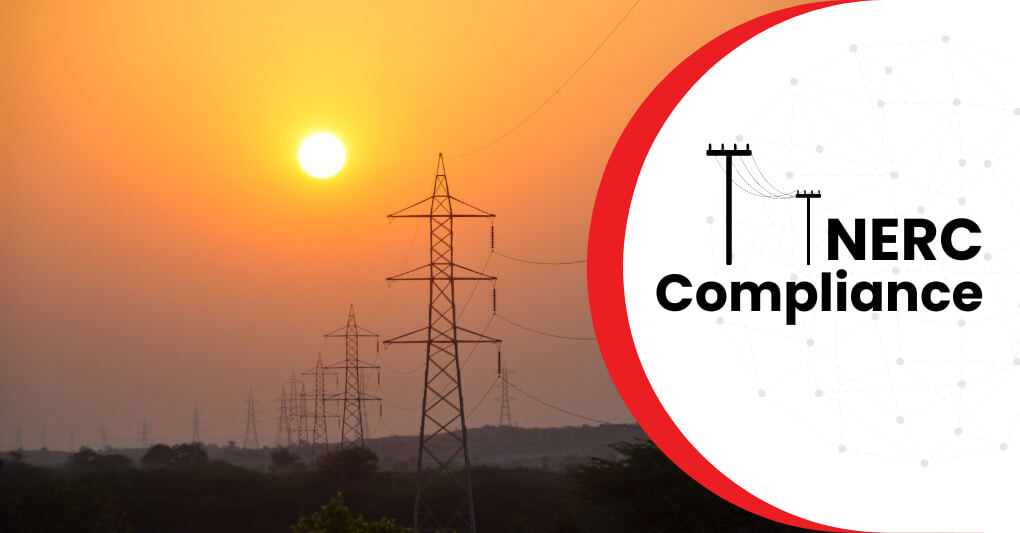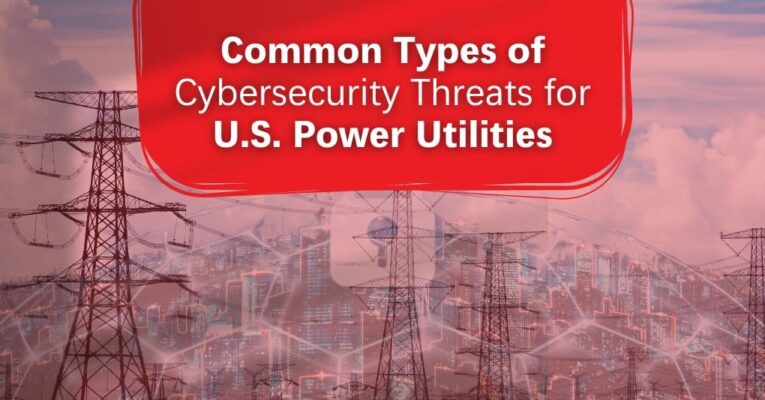The electricity grid spanning the United States, Canada, and parts of Mexico is responsible for ensuring reliable electrical power supply across the continent, with a team of over 1,900 operators managing the interconnected grids. Despite this, power outages can occur unexpectedly, triggered by various factors such as extreme weather events, sabotage, accidents, vermin, or vegetation encroachment. This is where NERC compliance comes in.
NERC: Its Origins, Roles & Responsibilities, and Standards
Established to safeguard the Bulk Electric System (BES) in North America, the North American Electric Reliability Corporation (NERC), with its guidance, standards, education, and compliance efforts, plays a crucial role in ensuring the continuous supply of electricity to cities, homes, and businesses.
Key Focus Areas
In its role as the vigilant overseer of the power sector, NERC, an independent, non-profit organization, not only develops and enhances reliability standards but also enforces compliance, provides industry education, and imposes penalties for violations. Serving the contiguous United States, Canada, and the northern part of Baja Mexico, NERC caters to over 334 million people. It is guided by its four pillars – Reliability, Assurance, Learning, and a Risk-Based Approach.
NERC strategically focuses on standards and compliance, risks to reliability, and coordination and collaboration to foster continuous improvement and a culture of compliance in the power industry.
Reliability Standards
Since 2010, NERC has shifted its focus to results-based standards, emphasizing accomplishment over methodology and considering each standard as a “defense-in-depth strategy” for harm prevention. Encompassing approximately 100 standards across various disciplines, NERC’s standards, covering diverse business functions such as facility planning, emergency preparedness, and cybersecurity, rely on a dedicated team for enactment and compliance.
Oversight of compliance and enforcement is conducted by Registered Entities (REs), which also approve mitigation plans and impose penalties for noncompliance. The Electric Reliability Organization (ERO) manages the ongoing evolution of standards through the Reliability Standards Development Plan (RSDP), a vital tool in standard development.
Compliance
NERC compliance applies to any organization involved in the generation, transmission, and interconnection of the bulk power system in the United States, Canada, and parts of Mexico. Mandated by the Federal Energy Regulatory Commission (FERC) through the Federal Power Act, compliance is monitored and certified by NERC. Bulk power system entities must adhere to NERC-approved Reliability Standards, registering with the relevant Registered Entity (RE).
Non-compliance can result in penalties based on severity and duration, which will be overseen by REs. Specialized functions require additional certifications, managed by the appropriate REs, with penalties and compliance monitoring in case of violations.
Navigating NERC Compliance: A Comprehensive Guide
Managing NERC compliance is a critical aspect of ensuring the reliability and security of the bulk electricity infrastructure. The ERO Enterprise, composed of NERC and eight Regional Entities, oversees the Compliance Monitoring and Enforcement Program (CMEP) and releases an annual implementation plan to guide successful compliance efforts. The key components of managing NERC compliance include:
1. Annual Implementation Plan:
The ERO Enterprise’s annual implementation plan outlines risk elements to prioritize compliance efforts. These elements encompass critical areas such as critical infrastructure protection, extreme physical events, maintenance of Bulk Power System (BPS) assets, monitoring and situational awareness, protection system failures, event response and recovery, planning and system analysis, as well as human performance.
2. Audits:
NERC conducts audits every six years for registered organizations and every three years for certified ones. The Regional Entities provide Reliability Standard Audit Worksheets (RSAW) to outline required audit information. Third-party vendors offer services supporting self-certification, conducting mock audits, identifying process gaps, testing compliance, creating policies, providing management guidance, and offering maintenance reviews and personnel training.
3. Compliance and Certification Activities:
The process involves organization registration, organization certification, compliance investigations, and addressing complaints. Compliance and certification efforts are vital for upholding the standards set by NERC, ensuring the robustness of the bulk electricity infrastructure.
The Complexities of NERC Compliance
The bulk electricity infrastructure is complex, interconnected, and international. NERC collaborates with governmental boundaries and agencies to establish standards, monitor activities, and enforce penalties. Recognizing that not all incidents can be prevented, NERC focuses on consistent enforcement of standards to significantly reduce the occurrence of incidents. NERC standards emphasize quick response and recovery, ensuring that incidents are promptly addressed and remedied.
Successfully managing NERC compliance requires a thorough understanding of the annual plan, proactive engagement in audits, and diligent adherence to compliance and certification activities. Third-party vendors play a crucial role in supporting organizations through various compliance-related services, contributing to the overall reliability and security of the bulk electricity infrastructure.
NERC Critical Infrastructure Protection (CIP) Standards: An Overview
NERC CIP outlines essential security controls to ensure the secure operation of the BES, making compliance crucial for addressing cybersecurity risks to the bulk power system (BPS). With 13 active standards, NERC CIP provides cybersecurity guidelines for the North American BES, ensuring the security of utility assets connected to IT networks. These standards cover critical aspects such as:
- CIP-002-5.1a – Categorization of BES Cyber Systems: Identify and secure assets critical to BES reliability, categorizing them based on potential risks and implementing appropriate controls.
- CIP-003-8 – Management of Security Controls: Define and implement security controls focusing on personnel training, electronic security perimeters, physical asset security, incident reporting, and safeguarding sensitive information.
- CIP-004-6 – Training and Management of Security Personnel: Conduct yearly security awareness training, addressing proper implementation of cybersecurity policies, physical access controls, handling sensitive information, and security risk management.
- CIP-005-6 – Safeguarding Electronic Security Perimeters: Protect BES assets through defined electronic security perimeters, routing external connectivity through electronic access points, and detecting malicious communications.
- CIP-006-6 – Physical Security of BES Cyber Systems: Implement physical access controls, monitor unauthorized access, issue alarms, and maintain access logs to prevent unauthorized physical access to BES assets.
- CIP-007-6 – Management of Security Systems: Manage security systems by disabling insecure logical ports, connecting only necessary physical or output ports, installing security patches, and logging security events.
- CIP-008-6 – Incident Reporting and Response Planning: Establish processes for identifying and responding to security incidents, define roles and responsibilities, document incident response plans, and test plans regularly.
- CIP-009-6 – Recovery Planning: Document conditions for recovery plan activation, define roles, verify backup completion, preserve data, and test recovery plans at least once every 15 months.
- CIP-010-3 – Configuration Change Management: Develop baseline configurations, document changes, update configurations, and conduct regular testing to manage changes effectively.
- CIP-011-2 – Protection of Information: Protect critical information during storage, transit, and use, ensuring the destruction of data storage media during asset disposal.
- CIP-012-1 – Communications between Control Centers: Safeguard real-time assessment data transmission between control centers through risk mitigation, compliance with secure data protocols, and defined responsibilities.
- CIP-013-1 – Management of Supply Chain Risk: Develop a supply chain risk management plan, including processes for procurement planning, risk assessment, communication with vendors, and documentation of supply chain risk management.
- CIP-014-3 – Physical Security: Conduct risk assessments at specified intervals, verify assessments through third parties, and implement recommended changes to enhance physical security
.
In Conclusion
Compliance with these standards, when tested and optimized regularly, ensures the secure operation of BES assets. Partnering with a NERC CIP compliance expert like GRIDsentry can enhance your ability to navigate and optimize compliance based on current and future security needs.
Elevate your power infrastructure’s cybersecurity defenses and achieve NERC compliance seamlessly with GRIDsentry’s sophisticated suite of solutions. Tailored for both simplicity and effectiveness, our comprehensive offerings encompass asset management, intrusion protection and detection, defensive deception technology, and cutting-edge AI/ML techniques. Connect with our cybersecurity experts for a live demonstration and experience heightened security for your critical assets.


